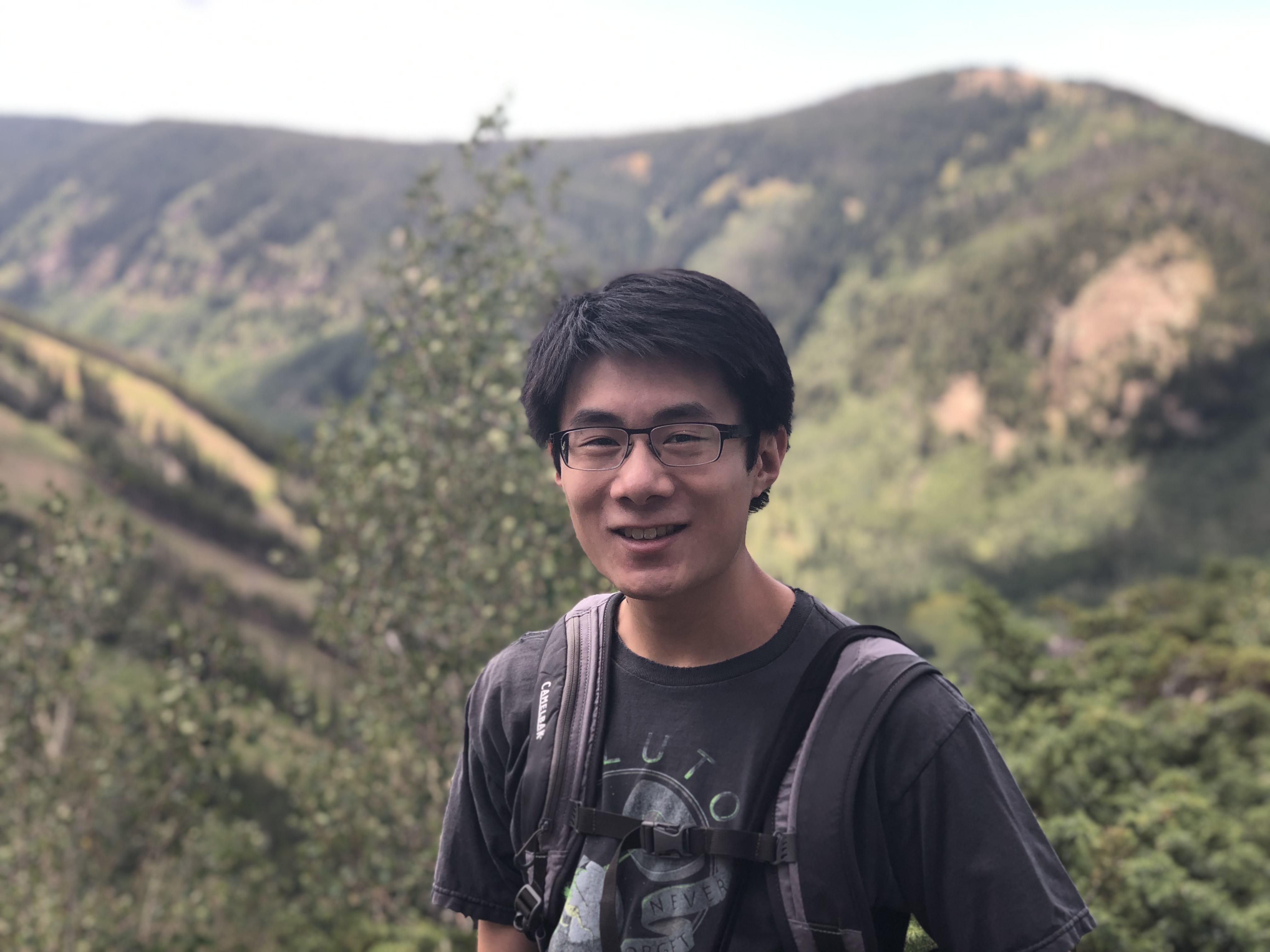About me

Hi! I'm a physics PhD student working in the Covey Lab at the University of Illinois Urbana-Champaign building a programmable tweezer array of ytterbium-171 atoms. Our platform has myriad potential applications in quantum computing, networking, and simulation.
Links:
Research
My undergraduate research at Rice was in refining the long-range aspects of the ground-state strontium molecular potential via the development of numerical tools to solve the Schrödinger equation. Going forward, my interests lie in the implementation of quantum algorithms on scalable systems -- notably arrays of neutral ytterbium-171 Rydberg atoms. Lately I have also developed an interest in programming language design, particularly how one may design a robust language to describe quantum computations.
Pre-prints
- W. Huie*, C. Conefrey-Shinozaki*, Z. Jia, P. Draper, and J. P. Covey, "Three-qubit encoding in ytterbium-171 atoms for simulating 1+1D QCD." arXiv:2507.18426.
Peer-reviewed publications
- L. Li, X. Hu, Z. Jia, W. Huie, W. K. C. Sun, Aakash, Y. Dong, N. Hiri-O-Tuppa, J. P. Covey, "Parallelized telecom quantum networking with a ytterbium-171 atom array." Nat. Phys. (2025). [arXiv]
- Z. Jia, W. Huie, L. Li, W. K. C. Sun, X. Hu, Aakash, H. Kogan, A. Karve, J. Y. Lee, and J. P. Covey, "An architecture for two-qubit encoding in neutral ytterbium-171 atoms." npj Quantum Information 10, 106 (2024). [arXiv]
- W. Huie, L. Li, N. Chen, X. Hu, Z. Jia, W. K. C. Sun, and J. P. Covey, "Repetitive Readout and Real-Time Control of Nuclear Spin Qubits in 171Yb Atoms." Phys. Rev. X Quantum 4, 030337 (2023). [arXiv]
- L. Li, W. Huie, N. Chen, B. DeMarco, and J. P. Covey, "Active Cancellation of Servo-Induced Noise on Stabilized Lasers via Feedforward." Phys. Rev. Applied 18, 064005 (2022). [arXiv]
- N. Chen*, L. Li*, W. Huie*, M. Zhao, I. Vetter, C. Greene, and J. P. Covey, "Analyzing the Rydberg-based optical-metastable-ground architecture for 171Yb nuclear spins." Phys. Rev. A 105, 052438 (2022). [arXiv]
- W. Huie, S. G. Menon, H. Bernien, and J. P. Covey, "Multiplexed telecommunication-band quantum networking with atom arrays in optical cavities." Phys. Rev. Research 3, 043154 (2021). [arXiv]
- J. C. Hill, W. Huie, P. Lunia, J. D. Whalen, S. K. Kanungo, Y. Lu, and T. C. Killian, "Photoassociative Spectroscopy of 87Sr." Phys. Rev. A 103, 023111 (2021). [arXiv]
- A. Erwin, K. J. Stone, D. Shelton, I. Hahn, W. Huie, L. A. N. de Paula, N. D. Schmerr, H. J. Paik, and T. C. P. Chui, "Electrostatic frequency reduction: A negative stiffness mechanism for measuring dissipation in a mechanical oscillator at low frequency." Rev. Sci. Instrum. 92, 015101 (2021).
Projects
ZX-Calc
Extensible tools for working in the ZX-calculus, a diagrammatic language for reasoning about linear maps between n-partite combinations of two-level quantum states. This project is still in its early stages, and will contain multiple implementations of the calculus along with interfaces to commonly used quantum circuit descriptors like OpenQASM.
Tensor-Net
Small tensor network and matrix product state library for simulating quantum circuits of qubits with projective measurements and nearest-neighbor couplings. States are represented in canonical form, allowing efficient calculation of entanglement entropy. Abstractions are oriented around the study of measurement-induced phase transitions in Haar-random circuits.
Clifford-Sim
Efficient simulator for stabilizer/Clifford circuits in the Gottesman-Knill tableau representation. Features random sampling of the N-qubit Clifford group, configurable gate sets, and simulated adaptive feedback based on randomized projective measurements.
Multilevel-Sim
Tools for simulating driven multilevel dynamics in atom-light systems using a variety of numerical methods for solution of the Schrödinger, Liouville, and Lindblad equations. Leverages Rust's polymorphic parametricity and traits to provide type-backed, high-level descriptions of various quantum systems.
xspace
Implementations of various numerical methods to solve the time-(in)dependent Schrödinger equation in arbitrary 1D potentials.
QuACS
Quantum Arithmetic and Circuit Simulator. Kind of like a baby version of Qiskit. Implements hashmap- and array-backed Dirac state vectors and operators. Provides a library of common gates which can be assembled into a naive circuit implementation with compilation to the standard Hadamard/Phase/Controlled-NOT universal gate set. Includes randomized state readout and mid-circuit projective measurement. Will also include tooling for implementations of both pure-quantum and hybrid algorithms, as well as simulation of per-gate noise.
QLisp
A small toy lisp written in 100% Rust with familiar Rust-like built-ins. Planned for eventual integration with QuACS as a high-level DSL for driving the major functions of the library.
SrSolve
Implementation of various numerical methods to solve the time-independent Schrödinger equation. Originally designed for the calculation of bound states of strontium dimers as part of my senior thesis project, but methods are easily generalizable to other potentials as well.